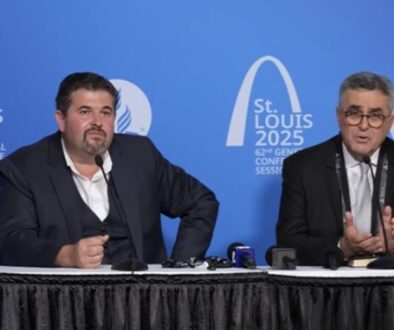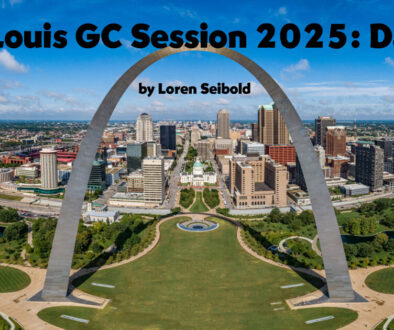It Can Be Documented?
by Andy Hanson
by Andy Hanson, October 26, 2014
The following is a quote from God's Final Message and Your Role, Ted Wilson’s closing address at a 10-day International Conference on the Bible and Science in St. George, Utah, on August 24, 2014. (1)
The claim that a particular day in our present seven-day weekly cycle is the same twenty-four hour time period that was called the Sabbath by Old Testament Jews, is magical thinking. (2)
If one is interested in documenting the geologic history of our planet, I recommend The Rocks Don’t Lie by David R. Montgomery.
If one believes the literal account of human history as recorded in the biblical genealogy (Noah’s flood occurred about 2349 BC, and the Tower of Babel around 2242 BC), I suggest researching the civilizations of the Indus Valley, (3) South America, (4) and/or Egypt. (5).
In terms of astronomical evidence, I know of only one creation scientist who proposes that there is astronomical evidence for the young earth model. Barry Setterfield has proposed that:
“The speed of light and rate of radioactive decay have and continue to decrease. This provides evidence for the creation of the universe as being a rapid expansion as stated in 16 verses in the Bible in both the Old and New Testaments (God spread out the heavens). It also refutes Big Bang theory, since this expansion took place at a rate vastly faster than the BB theory could possibly allow. It also discredits the claim that red shift is evidence the universe is billions of years and provides for a young universe.”(6)
This theory has been abandoned by almost all other creation scientists (7) and is classified as “woo-woo” science by credible scientific authorities. (8)
Note:
A friend asked me why I would waste my time questioning the qualifications of the GC President to speak authoritatively about “scientific evidence” that supports Adventist doctrine. He argued that religious faith is conservative and based on tradition, and the rational testing of faith might be viewed as misguided or worse. When I tried to explain my idealistic motives, he said the only thing I could hope for was to avoid the fate of Isaiah.
________________________________________________________
2 See my 2013 Adventist Today blog, Samoa, the International Dateline Shift, and the Seventh-day Sabbath. https://www.atodayarchive.org/article/1937/opinion/hanson-andy/2013/samoa-the-international-dateline-shift-and-the-seventh-day-sabbath
3 In the vast Indus River plains (located in what is today Pakistan and western India), under layers of land and mounds of dirt, archaeologists discovered the remains of a 4,600 year-old city. A thriving, urban civilization had existed at the same time as Egyptian and Mesopotamian states — in an area twice each of their sizes.
https://www.ushistory.org/civ/8a.asp
4 3500 BC: The peoples of the New World have, by this date, domesticated a much greater range of plants than have those of the Old. The largest and most numerous villages are to be found on the coasts of Peru, Ecuador and Colombia, due to the Pacific Ocean currents that produce a rich harvest of marine foods. By this date these communities are shifting to a more agricultural economy, and their populations are growing. The inhabitants of some of the larger villages are beginning to construct ceremonial platforms, a feature which will be very prominent in later South American civilization.
https://www.timemaps.com/history/south-america-3500bc
5 By about 6000 BC, a Neolithic culture rooted in the Nile Valley. During the Neolithic era, several predynastic cultures developed independently in Upper and Lower Egypt. A unified kingdom was founded in 3150 BC by King Menes leading to a series of dynasties that ruled Egypt for the next three millennia.
https://en.wikipedia.org/wiki/History_of_Egypt
6 https://www.youtube.com/watch?v=QdTlOVTDbNU
7 Even at the Institute for Creation Research (ICR) in the USA, Gerald E. Aardsma (1988) said there was no discernible trend in the data presented by Norman and Setterfield.
8 A Scientist's Perspective by Eric Ayers
Barry Setterfield gets full credit for imagination. His hypothesis that the speed of light is slowing exponentially with time is much more creative than the usual woo-woo that masquerades as science in the Biblical-literalist literature. But creativity |refreshing as it may be| is not sufficient; in science, a hypothesis must be supported by the data. There is so much that is wrong with everything Mr. Setterfield is proposing that it's difficult to know where to begin; so in the interest of economy, I will deal only with the core of his argument.
His entire hypothesis rests on the idea that the speed of light has changed wildly over the history of the universe. He argues that the speed of light would have had to be fast enough in the past that light from a visible object millions of light-years away could reach earth in just 6,000 years. If only we had a way of measuring the speed of light thousands of years ago. . . And we do!
Supernova 1987A was surrounded by a ring of gas that had been ejected from the star before it went nova. When this ring of gas was hit by the ultraviolet ash from the supernova, it began to fluoresce. We can (and did) measure the time between the supernova explosion and when the ring began to glow. By measuring the angular size of that ring and the distance to the star (168,000 light-years) we can use simple trigonometry to calculate the distance from the star to the ring. Distance divided by time gives us speed. According to Mr. Setterfield's hypothesis, that speed would have to be at least 28x the currently accepted speed of light, but the observed speed, as measured by an event 168,000 years ago, was within measurement error of the speed of light now.
And with that, we're done. There's no need to respond to the rest of Mr. Setterfield's arguments, or marvel at how “miraculously" he makes the entire history of the cosmos fit within Ussher's chronology. Consequently, there is no need to poke holes in the rest of his work. His hypothesis, and everything dependent on that hypothesis, is disproven.
Notice this quote from Augustine:
Often a non-Christian knows something about the Earth, the heavens. . . the motions and orbits of the stars, . . . and this knowledge he holds with certainty from reason and experience. It is thus offensive and disgraceful for an unbeliever to hear a Christian talk nonsense about such things, claiming that what he is saying is based in Scripture. We should do all that we can to avoid such an embarrassing situation, lest the unbeliever see only ignorance in the Christian and laugh to scorn.9
These words, written some 1,600 years ago, are no less relevant today.
Bio:
Dr. Eric Ayars earned a B.S. in Physics from Pacific Union College and a Ph.D. in Physics from North Carolina State University. He is a Professor of Physics at California State University, Chico, and an ex-Adventist.
9from De Genesi ad litteram; the Literal Meaning of Genesis, an unfinished work



